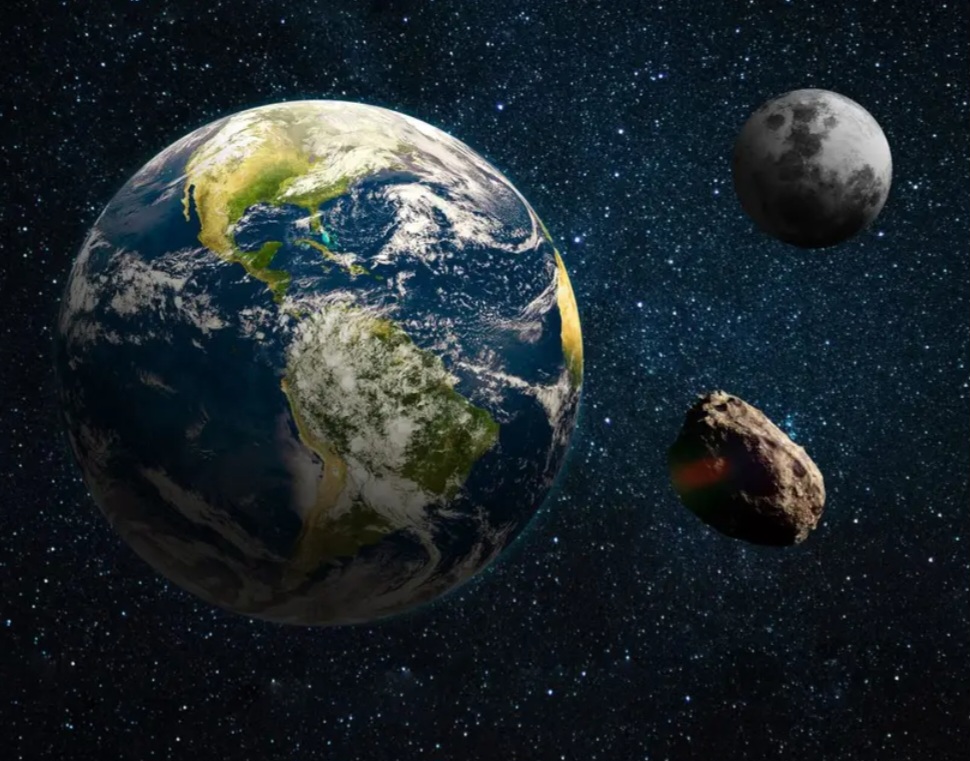‘Intriguing,’ You actually want to read some insights shared by astronomers at the Complutense University of Madrid. and at the Massachusetts Institute of Technology (MIT) about these celestial visitors.
Over the past few weeks, you’ve probably heard somewhere that Earth was going to get a second moon. Well, we can now confirm that Earth now officially has two moons after capturing asteroid 2024 PT5.
On Sunday, September 29, our planet captured the tiny asteroid named 2024 PT5, turning it into a temporary mini-moon.
This intriguing event was first spotted by astronomers at the Complutense University of Madrid. Richard Binzel, an astronomer at the Massachusetts Institute of Technology (MIT), shared some insights about these celestial visitors.
Air Is a New Source of Electricity – Study
‘Eat Red Meat, Risk Type 2 Diabetes Over 10 Years’ – Study
Tears of A Wife Can Cure An Aggressive Husband – Study
The More You Hang Out With Your Mom, The Longer She’ll Live – Study
“These happen with some frequency, but we rarely see them because they’re very small and very hard to detect,” Binzel said. “Only recently has our survey capability reached the point of spotting them routinely.”
Using a powerful telescope located in Sutherland, South Africa, the team from Complutense University detected the small space rock back in August.
What are mini-moons?
What exactly are mini-moons, and how often do they visit us?
Mini-moons like 2024 PT5 are small asteroids that Earth’s gravity grabs for a bit, letting them orbit our planet before they move on.
These little guys usually travel around the sun like other asteroids, but when they get close enough to Earth, our gravitational pull can pull them into a temporary orbit.
They don’t stick around for long — they might hang out for a few weeks or months before breaking free and continuing their journey around the sun.
Scientists find mini-moons really interesting because they give us a chance to study near-Earth objects up close and learn more about how our solar system works.
Journey of 2024 PT5
According to data from NASA’s Jet Propulsion Laboratory Horizons system, this mini-moon’s stay will be brief.
The temporary capture started at 3:54 p.m. EDT on September 29, 2024, and will end at 11:43 a.m. EDT on November 25, 2024.
So, where did this little visitor come from?
2024 PT5 is part of the Arjuna asteroid belt — a group of space rocks that follow orbits similar to Earth’s, about 93 million miles from the sun.
Some Arjuna asteroid belt objects can approach Earth at a close range of around 2.8 million miles and at a relatively low velocity of less than 2,200 miles per hour.
“Asteroid 2024 PT5 will not describe a full orbit around Earth. You may say that if a true satellite is like a customer buying goods inside a store, objects like 2024 PT5 are window shoppers,” Carlos de la Fuente Marcos, a professor and mini-moon expert from the Complutense University, explained to Space.com.
Carlos is the author of a scientific paper titled “A Two-month Mini-moon: 2024 PT5 Captured by Earth from September to November” recently published by the by the American Astronomical Society in the journal IOPscience.
How common are captures like 2024 PT5?
Though it might sound extraordinary for Earth to gain a second moon, these gravitational captures are more common than you might think.
Scientists have officially documented two prior “short captures,” which last about a week and are estimated to occur several times per decade. There have also been two rarer “long-capture” events.
After its brief visit, 2024 PT5 will continue its journey around the sun as part of the Arjuna family of asteroids.
It won’t stick around for billions of years like our primary moon, but its fleeting presence is a reminder of the dynamic nature of our cosmic neighborhood.
Not currently visible
Now, you might be wondering if you can spot this mini-moon in the night sky. Unfortunately, it’s too small and dim for most of us.
The object is too small and dim for typical amateur telescopes and binoculars. However, the object is well within the brightness range of typical telescopes used by professional astronomers.
A telescope with a diameter of at least 30 inches plus a CCD or CMOS detector is needed to observe this object; a 30-inch telescope and a human eye behind it will not be enough.
Comparing 2024 PT5 to our moon
To put its size into perspective, our moon is about 2,159 miles in diameter. In contrast, 2024 PT5 is believed to be just 37 feet wide. That makes our moon over 300,000 times wider than this tiny asteroid!
Even though we can’t see it ourselves, knowing it’s up there is pretty exciting. It’s like having an invisible guest sharing our orbit for a little while.
These mini-moons might be small, but they offer big opportunities for scientists to learn more about near-Earth objects. They can provide insights into the composition of asteroids and the dynamics of our solar system.
“These temporary captures are natural cosmic laboratories,” Binzel mentioned. “They help us understand the small bodies that come close to Earth and could be important for future space missions.”
What happens next?
As 2024 PT5 continues its journey, we’ll keep our eyes — and telescopes — on the skies. After all, who knows when the next mini-moon might drop by?
Perhaps future technology will allow us to study these fleeting visitors more closely. Maybe one day, we’ll even send missions to them to gather samples or test new spacecraft.
So, for a few weeks, Earth will have a tiny companion circling around it. While it’s here, let’s appreciate the wonders of our ever-changing universe and the surprises it brings our way.
The full study was published in the journal IOPscience.
Source: Earth.com
Weitten by Eric Ralls, Earth.com staff writer





